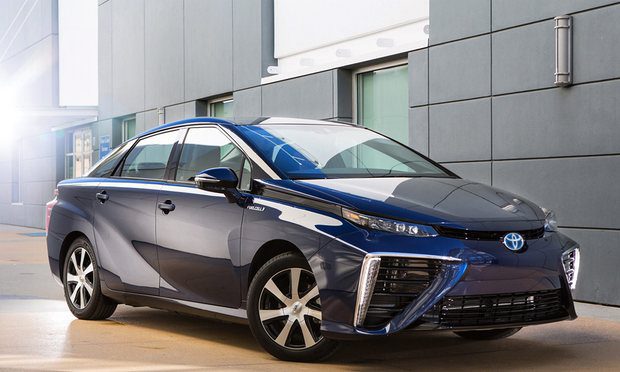B2 – Upper Intermediate
Toyota has started selling a few hundred Mirai cars in Japan, US and Europe. The Japanese car maker has taken its first small step into the unproven market for emissions-free, hydrogen-powered vehicles.
https://www.theguardian.com/technology/2014/nov/18/toyota-begin-selling-fuel-cell-cars-mirai
Discussion Questions:
1. Which car bands do you prefer?
2. Do you think more environment-friendly cars should be produced?
3. Are there now more and more “green” cars running aound your city?
4. Is air pollution a major problem in your country? Kindly discuss.

2 replies on “Toyota Selling Hydrogen Fuel Car”
Hello,
The link is not working. Or I can not open it.
Try a modern browser (firefox, chrome…)
Here is the text:
There will only be a few hundred, and they won’t be cheap, but Toyota is about to take its first small step into the unproven market for emissions-free, hydrogen-powered vehicles.
The world’s largest carmaker announced on Tuesday that it will begin selling fuel cell cars in Japan on 15 December, 2014, and in the US and Europe in mid-2015. The sporty-looking, four-door Toyota Mirai will retail for 6.7m yen (US$57,600) before taxes. Toyota Motor Corp hopes to sell 400 in Japan and 300 in the rest of the world in the first year.
Fuel cell vehicles run on compressed hydrogen gas, which in the Mirai’s case is stored in two tanks mounted underneath the vehicle. They emit no exhaust, although fossil fuels are used to produce hydrogen and to pressurise it.
Both Honda and Hyundai are also experimenting with limited sales and leases of fuel cell cars. Apart from the relatively high cost, buyers will have to contend with finding fuel. Only a few dozen hydrogen filling stations have been built worldwide, although governments are subsidising more being built.
It’s an uncertain future that depends both on whether makers can bring down the price, and a wide enough network of filling stations is built. Yoshikazu Tanaka, deputy chief engineer for Toyota’s next generation vehicle development, said he expects it will take 10 to 20 years for the Mirai to reach sales in the tens of thousands of vehicles a year.
Asked if it’s a risk, he said yes, but Toyota views it as a challenge. Likening it to a chicken and egg situation, he said if you say it’s too risky and don’t move forward with production, the number of filling stations will never grow.
Toyota faced a similar scenario with its gasoline-electric hybrid, the Prius, which now sells in big numbers.
“It was a big challenge when we first introduced the Prius, or hybrid car, in 1997,” he said in an interview in Tokyo. “And it’s an even bigger challenge this time because there is no infrastructure, and we’re trying to lead” the commercialisation of fuel cell cars.
Hoping to offset the inconvenience of finding fuel, Toyota gave the car a futuristic look inside and out. Mirai means future in Japanese and it has made it peppy to try to attract buyers. It accelerates particularly quickly from about 40 to 70km/h (25 to 40mph), Tanaka said.
The Japanese government also plans to offer a 2m yen subsidy to those who buy fuel cell cars, reducing the effective price to 4.7m yen.
Sales will be limited to the primarily urban areas that have fuelling stations.
In Japan, with about 30 stations, that means the regions around Tokyo, Osaka and Nagoya cities in central and western Japan and the northern part of Kyushu island in the south.
A few stations have opened in California in the United States, and there are plans to build some in the northeast. Germany and Britain are among European countries that have or plan to build them.
The first buyers are expected to be affluent people who want to reduce their carbon footprint and governments and companies that want to go green.
The Mirai can travel 650 to 700 kilometres (400-435 miles) on its two tanks of hydrogen. Hydrogen may be more expensive than gas initially, because there are so few customers but over time Toyota expects it will be cheaper to run a car on hydrogen than on gas.